This website may contain affiliate links and advertising so that we can provide recipes and guides at no additional cost to you. Learn more
Russian food is very much one of the world’s most underrated cuisines. It’s full of vibrant colors, layered textures, and rich flavors.
The diversity of the foods is made all the more remarkable by Russia’s harsh, cold climate. Despite this, Russians have been able to cultivate and cook so many flavorful dishes.
Throw in a range of influences, including Eastern European and Asian, and you have a cuisine fit for kings and queens!
So prepare for wide eyes and delicious cuisine as a native Russian takes us through 20 Russian foods you simply have to try.
Russian Food
1 – Pelmeni (Пельмени) – Dumplings
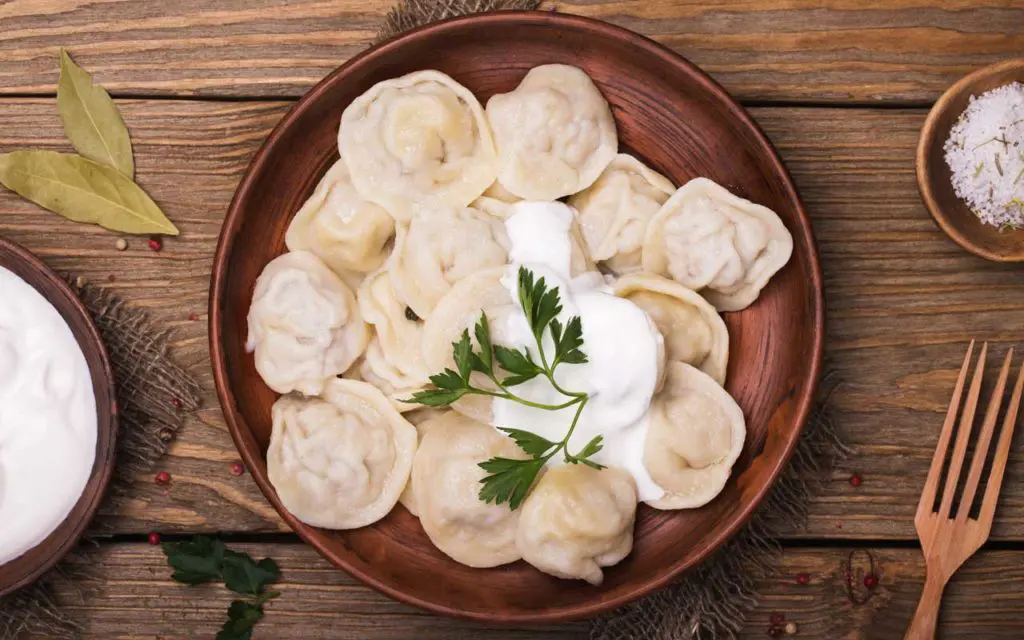
Pelmeni originated in Siberia and the literal translation is “bread ears.”
They are one of the simplest and most delicious foods you can try in Russia.
This dish is much more than just dough and minced meat. When you are invited for a traditional Russian lunch or dinner, be prepared to be offered a portion of pelmeni with sour cream along with a shot of vodka.
In Russia, the right way to consume pelmeni is to boil them and eat them using a fork.
However, some Russians also fry pelmeni on a pan with various vegetables and spices.
Whatever you do, don’t dare to leave Russia without tasting the famous pelmeni!
2 – Shi (Щи) – Cabbage Soup
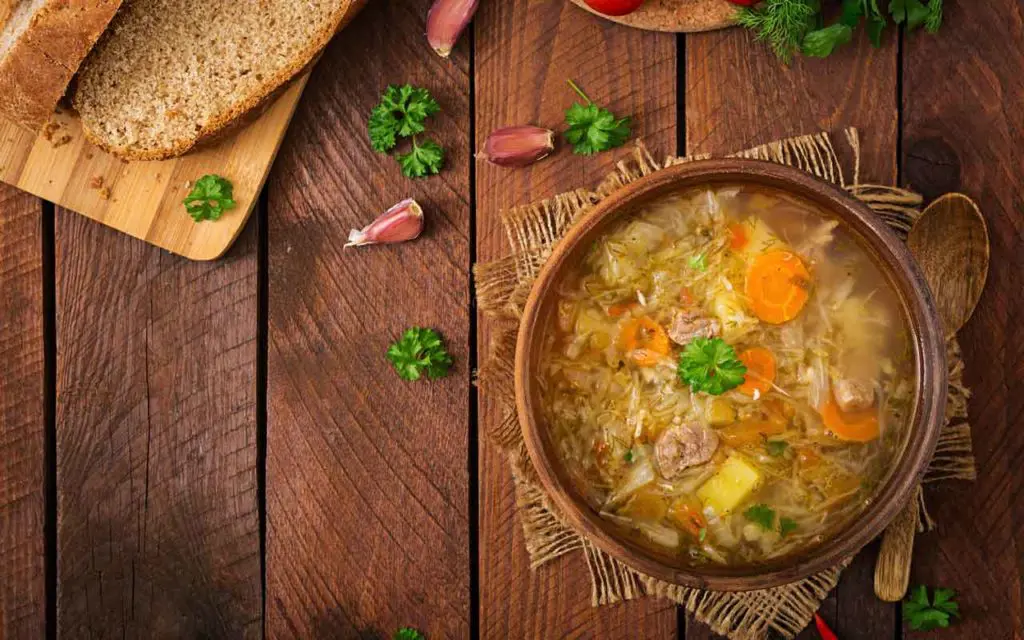
Russians absolutely adore shi. Its light consistency and rich taste, are the exact reasons why shi is considered to be the key to a delicious dinner.
The two main ingredients of this dish are beef and sour cabbage. Some Russians may add pickles, spinach, and peas (but let us stick to the traditional shi soup).
Historical records claim that this dish originated back in the 9th century when cabbage was first brought to Russia from Byzantium.
At first, it was a vegetarian dish as it only consisted of grated vegetables and cabbage.
Later on, those who could afford meat or fish started adding them into the vegetable bouillon.
Up until the modern days, shi can be referred to as either ‘hollow’ shi when it doesn’t have meat or fish or ‘rich’ shi when it does.
3 – Solyanka (Солянка) – Sausage Soup
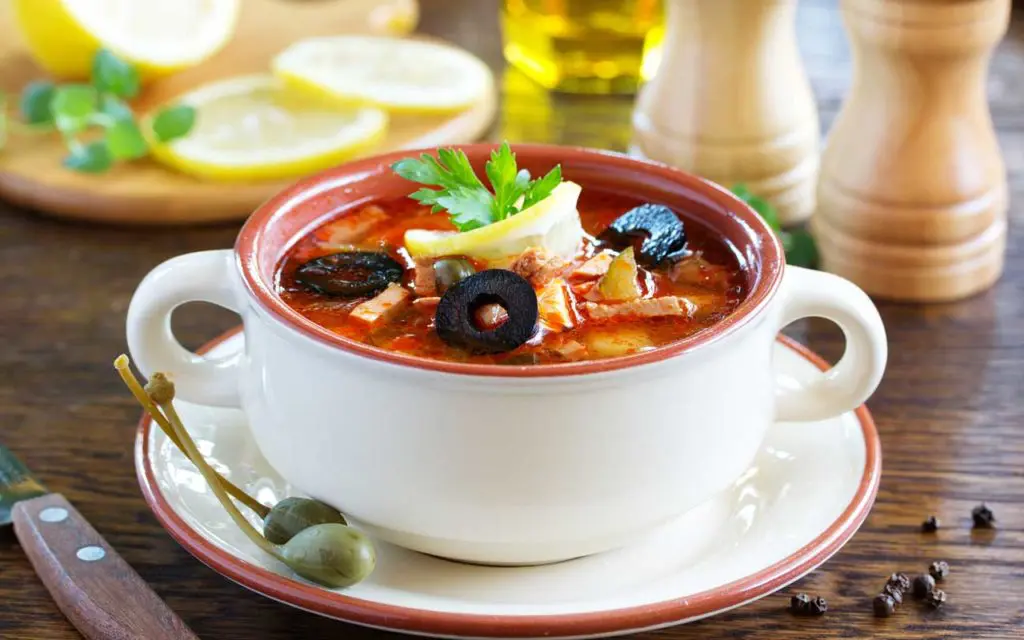
Originally, solyanka served as both an excellent appetizer and a main dish.
The term “solyanka” was first mentioned in one of the literary works of the 15th century, which described this dish as an excellent solution for a convenient lunch or dinner.
Due to the high content of fat, solyanka was famous for delaying the process of alcoholic intoxication, and so, quickly became a must-have on the local tables.
The soup is frequently cooked after a celebration, and it mainly consists of meat, bratwurst, and pickles.
All you will need to cook a proper meal is some patience and roughly two hours of time!
4 – Blini (Блины) – Pancakes
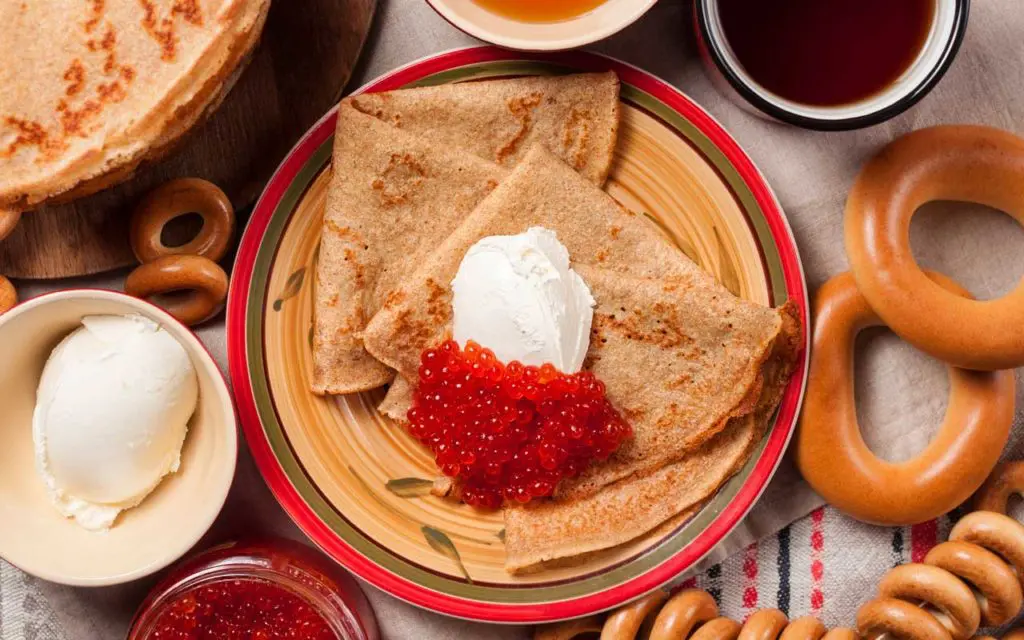
Oh, blini! What would Russians do without them? The word ‘blini’ for Russians, is mostly associated with a dacha (holiday home), babushka (grandmother), and a samovar (old-school tea kettle).
If you ask any Russian person what is their best childhood memory, they would most certainly reply “babushkini blini” (grandmother’s pancakes).
The reason why blini are so different from the traditional pancakes which we are used to is that they are made in a different way.
Yeast dough and milk – these are the ingredients that make Blini extremely thin, light, and absolutely delicious!
During ‘maslenitsa’ (often translated as ‘butter week,’ a Slavic celebration that takes place the week before the Easter Lent), a lot of blini are made in homes and outdoor fairs.
If you visit Russia during ‘maslenitsa’, don’t miss your chance to try blini with honey, homemade yogurt, varenie (jam), or red caviar.
5 – Vatrushka (Ватрушка) – Cream Cheese Bun

Vatrushka is a rounded bun with an open top, which is filled with sweetened cottage cheese and raisins.
It is assumed that the origin of the word vatrushka comes from Russia’s neighboring countries since vatra in most of the Slavic languages means ‘hearth’ or ‘fire’.
Perhaps it is not by chance then that vatrushka looks like a rounded and puffy sun.
Throughout the years, there have been many variations of this delicious dessert. Some locals add home-grown apples, berries, and even plain white yogurt!
To be completely honest with you, it can be very difficult to achieve a ‘puffy’ result if you are making the vatrushki without any tips from Russian households.
However, a successful result can be so fulfilling, that you will not regret spending two hours in the kitchen preparing them!
6 – Rasstegai (Расстегай) – Pie
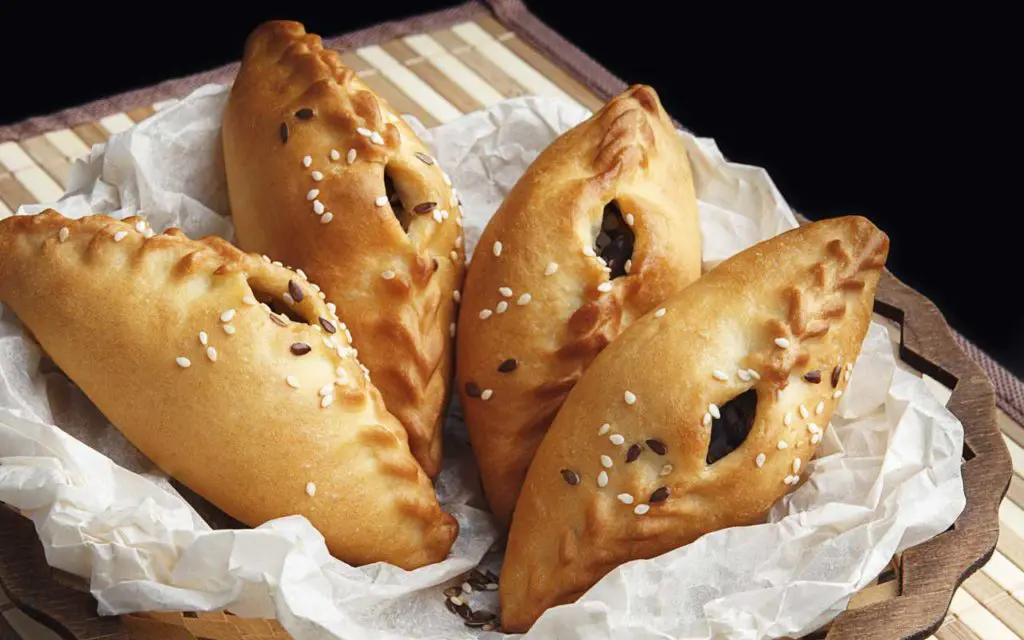
Rasstegai is a dish from the category of Russian pirogi (cakes and pies). It’s admired for its oval shape that fits perfectly in one’s hand.
The word rasstegai literally means “something that is unzipped”, and this explains why the shape is oval and the top of the pie is open.
Rasstegai can be made with minced meat and spices. However, traditionally, rasstegai was made with salmon fish and rice.
This is known to be a great main dish for those who don’t have much time for a meal.
Nowadays, rasstegai is often sold in small bakeries as well as small shops which are located in the metro stations (underground).
It is claimed by the locals that, when you live in a metropolitan city like Moscow, rasstegai can save your day, providing you with a delicious grab-and-go snack when you don’t have much time.
7 – Kvass (Квас) – Fizzy Fermented Drink
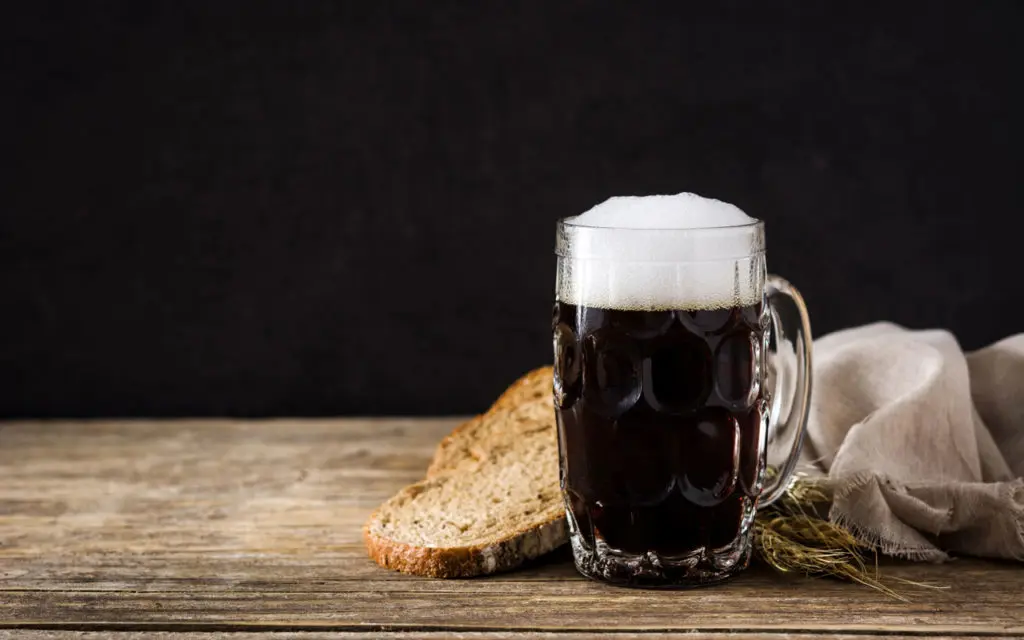
First fermented more than a thousand years ago, kvass is hailed as one of the most refreshing soft drinks in Russia.
Prior to the Russian Revolution of 1917, locals could not live a day without drinking kvass.
Even Alexander Sergeevich Pushkin, a famous Russian poet, said of Russians: “They needed kvass, the way they needed air”.
The main ingredient of kvass is rye, which makes the leaven of the drink.
If you ever get invited to a Russian lunch or dinner, the children will most likely be offered kvass, and you will be asked to taste okroshka, which is made with kvass.
Visit a supermarket in Russia, and you’ll see so many flavors of kvass. Apple, white, and dark are just some of the many variations of this beloved Russian drink.
However, if you want to taste the traditional drink, I suggest that you go for the dark kvass.
8 – Medovukha (Медовуха) – Honey Drink
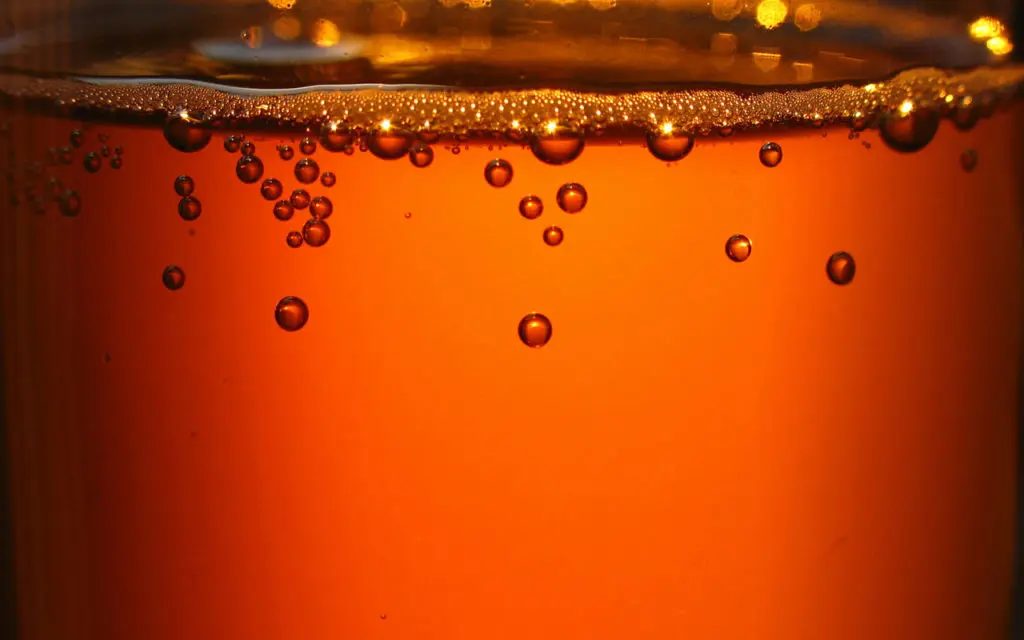
This honey-based beverage is a great drink for anyone who wants to find a happy medium between wine, beer, and spirits.
Russians argue medovukha is similar to mead but faster and easier to make.
Russian medovukha consists largely of honey and yeast. The honey gives the drink a rich aroma and a pleasant taste.
The alcohol content ranges from 5-16%, and the taste can differ depending on the amount of spices, ginger, or cinnamon added.
Along with honey and yeast, water, hops, and raisins are the other ingredients needed to ferment medovukha.
When brewed at home, the liquid is left to sit for around a week, to fully maximize the deliciously sweet taste.
9 – Varenie (Варенье) – Jam
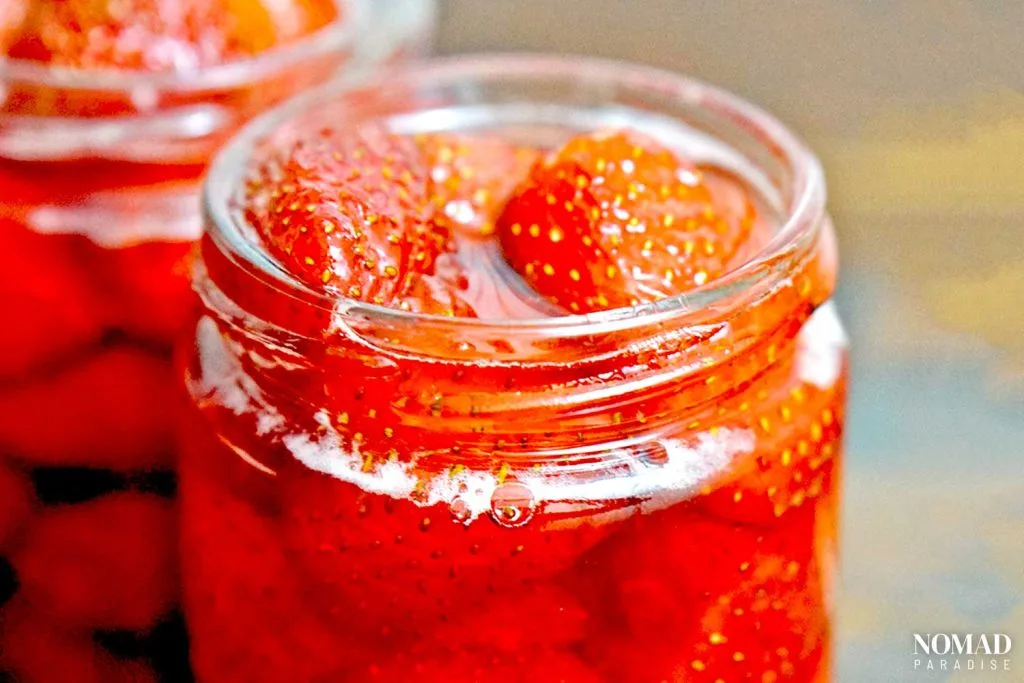
Russia’s landscape is full of rich forests, rivers, and mountain ranges. This geography makes parts of the country perfect for fruits and berries.
Respectively, Russians have been taught for centuries to harvest efficiently. This allowed them to stockpile enough food during the bitter winters.
When Russians go fruit and berry-picking (usually late May – early June), they always return with huge bags of juicy fruits and berries.
With so much fruit, Russians came up with a very convenient solution to eat it – varenie!
Varenie is essentially Russian jam. It’s been eaten for centuries and takes advantage of the diverse range of fruits and berries.
Large pots are filled with berries and tons of sugar, which are then cooked and canvassed. Strawberries, cranberries, currants, apples… you name it!
Varenie made from all these ingredients. It’s perfect all year round, and it complements many Russian breads and other Russian staple foods.
Varenye Recipe10 – Beef Stroganoff (Бефстроганов) – Beef with Sour Cream Sauce

Originated in Russia in the middle of the 19th century, beef stroganoff is considered to be a dish of the elite society.
Beef stroganoff is named after the successful Stroganoff family. It is believed one of their French chefs first came up with the dish for them.
The dish itself consists of plenty of bite-sized chunks of meat, cooked in a sauce with smetana (Russian sour cream).
Over time, more ingredients have been added to derive at the beef stroganoff we all know and love today.
These ingredients include onions, tomato sauce, potato, and mustard, while many chefs will sauté the beef.
Beef stroganoff has become popular around the world and is a beloved Russian food.
Beef Stroganoff Recipe11 – Holodets (Холодец) – Aspic
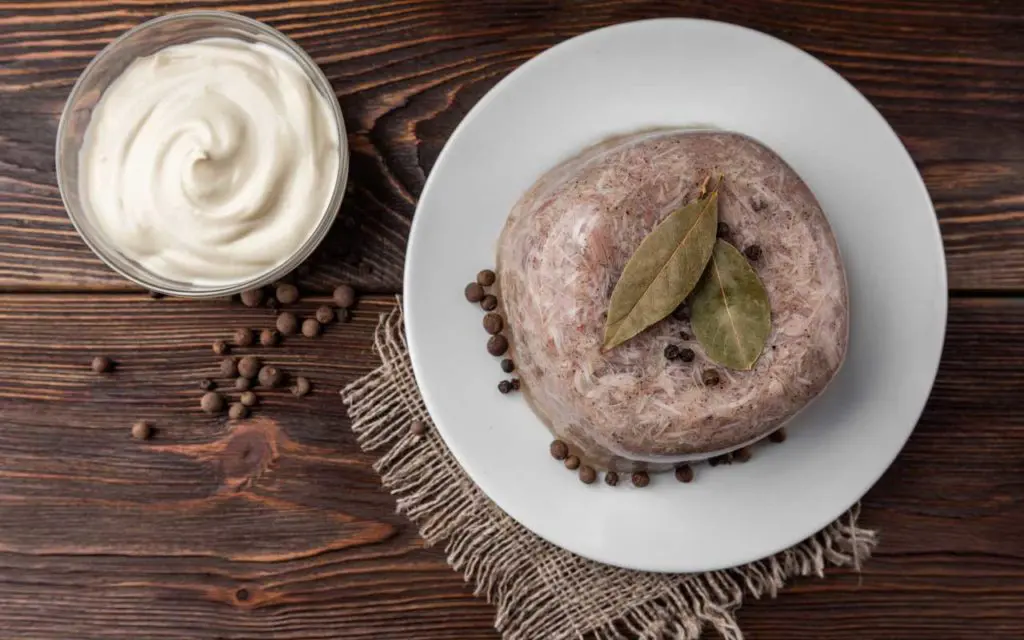
As well as being a filling appetizer, holodets is rich in nutrients and collagen, which helps maintain your bones, joints, and teeth in good health.
In Russia, it is commonly referred to as ‘Meat Jelly.’ This is because the dish mainly consists of pork shank meat and bouillon.
The dish originates from northern Russia. It was an ideal food to have on-hand for the farmers and peasants who needed filling foods throughout the winter months.
Holodets is also a very popular food with hunters. It’s ideal to pack for long days and nights, out in the wilderness.
12 – Pirogi (Пироги) – Pies
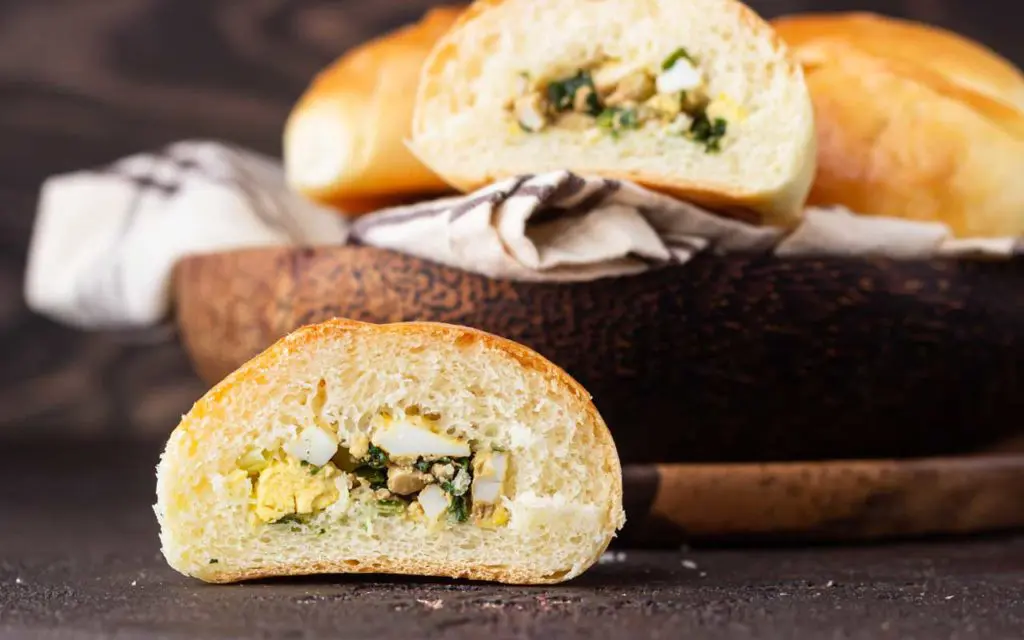
As you may have already guessed, Russians are big fans of pastries! Throughout this huge country, almost every region is famous for the pirog that it makes.
For example, Tula (located in the suburbs of Moscow), is famous for its prianik, which is a ‘compressed’ form of pirog.
Pirogi are a national treasure and one of the most important foods in Russian cuisine.
These baked pies, commonly made of yeast-raised dough, can be both sweet and savory and are filled with a wide range of ingredients.
Apples, potatoes, and minced meat are just some of the many fillings you’ll find in these delicious pies.
Pirogi also play a huge role in Russian culture and traditions. One such tradition involves making pirog for a couple who are due to be married.
One member of either family will prepare a plain pirog, and then decorate it. They will then hold it in a white linen tissue, and hand it to the groom.
Both the groom first, and then the bride, will each take a bite. It is said that whoever takes the biggest bite will become the ‘head’ of the family.
Wholesome and delicious, pirogi is much more than food to Russians: it’s a huge part of everyday life.
13 – Kasha (Каша) – Porridge
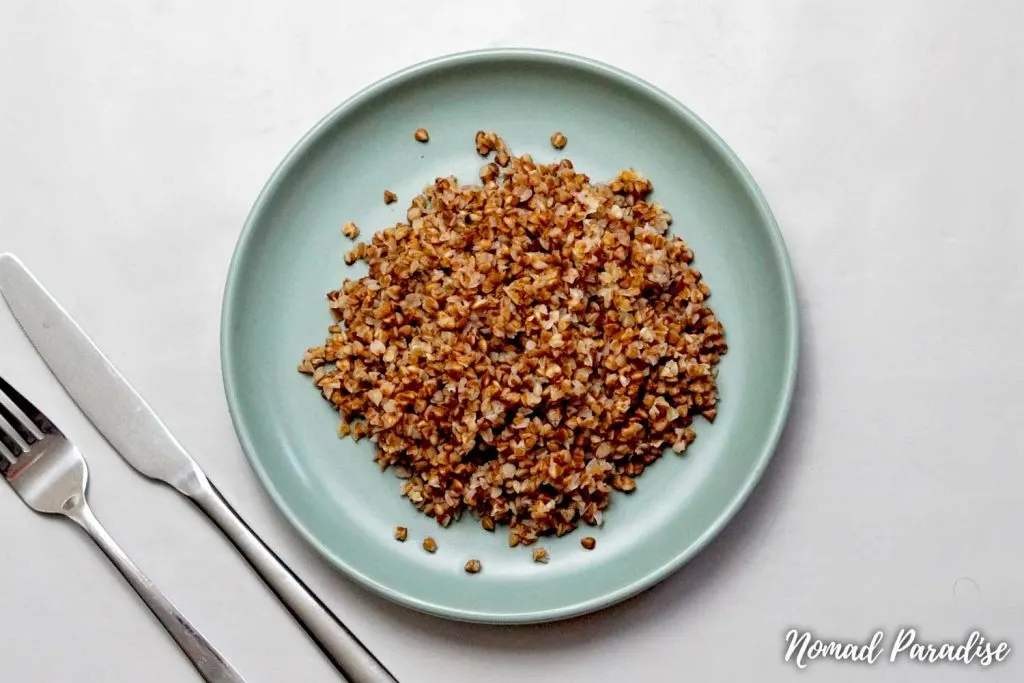
Russians believe if you want your day to be a successful one, you should start it with a bowl of kasha for breakfast.
Kasha is rich in fiber, potassium, and protein. Essentially Russian porridge, it can be baked, or boiled in hot water or milk.
Kasha comes in many variations. Oats, millet, rye, wheat, barley, and buckwheat are all commonly used cereals, and some locals like to experiment with bulgur too.
In Russia, children are encouraged to eat kasha from a young age, so that they grow tall and strong.
In 1987, a children’s cartoon was released under the name of “Heroic Kasha”, where a ‘Bogatyr’ (Russian knight-errant) appears to be eating kasha and growing into a very strong man.
If you are ever offered a traditional breakfast in Russia (usually in the villages), be sure to try kasha in a pot with a small slice of butter.
Buckwheat Kasha14 – Okroshka (Окрошка) – Cold Summer Soup
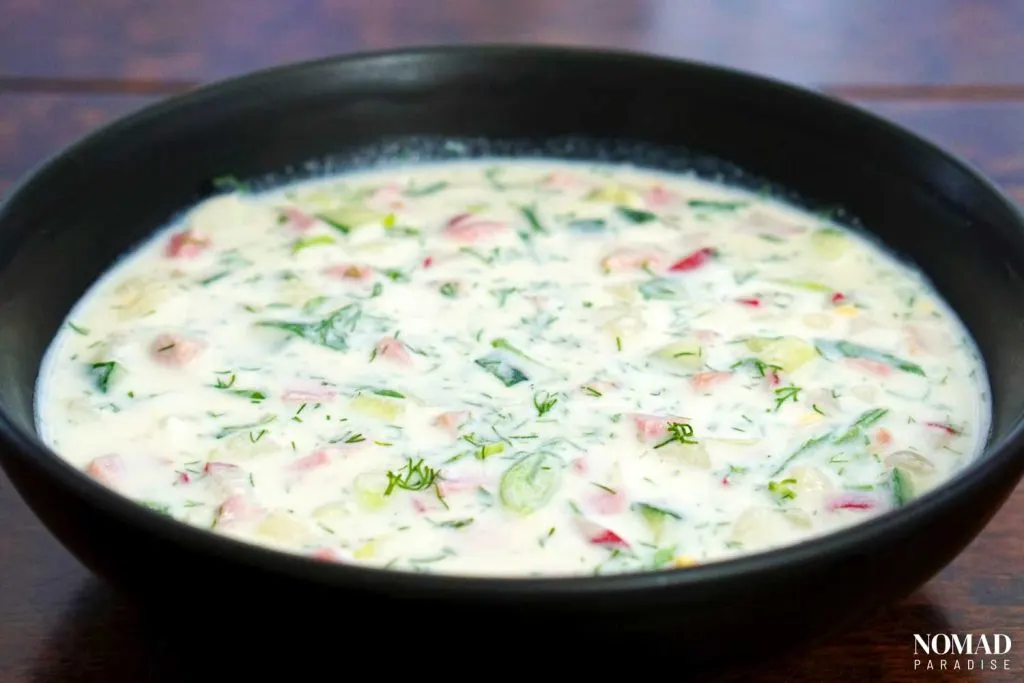
Okroshka is an unusual and delicious cold soup, made from diced vegetables, bratwurst, and kvass.
It is usually served as a refreshing appetizer or side-dish. The word “okroshka” originates from the ancient Russian language, and means “sour drink”.
Since this dish is served cold, some Russians argue that it should have a strong and rich taste.
For this reason, bratwurst can sometimes be replaced with beef tongue, while kvass is replaced with airan or salted kefir.
The stock is often shaken, and spices, such as powder mustard, added for a more intense flavor and extra aroma.
Okroshka is believed to have been created by Vasiliy Levshin, a famous Russian chef, with the original recipe published in one of his cookbooks in the 18th century.
Refreshing and delicious, okroshka is enjoyed across Russia throughout the summer.
Okroshka Recipe15 – Buzhenina (Буженина) – Roasted Pork
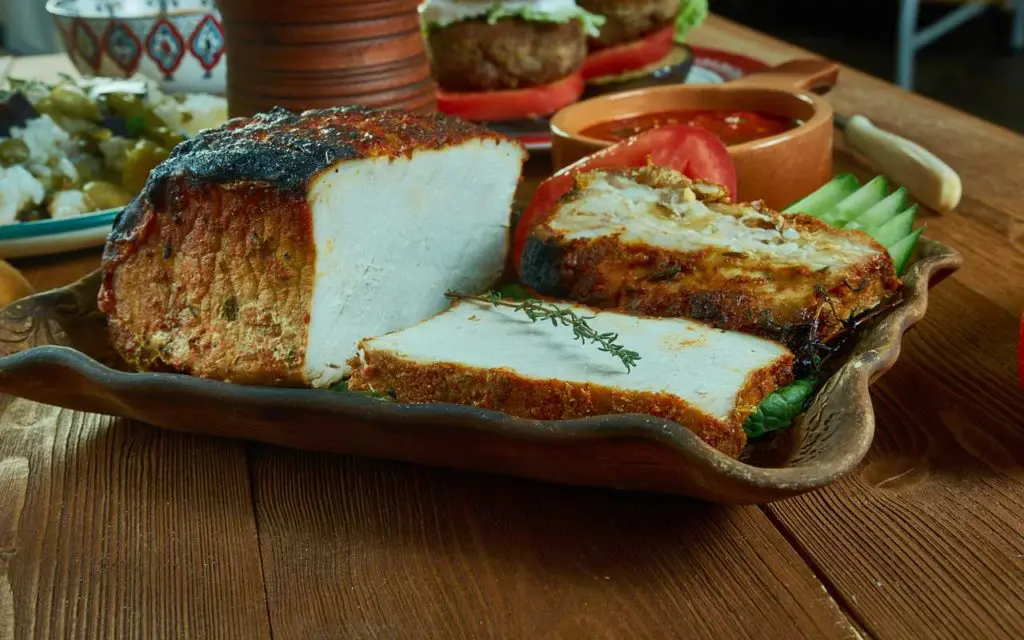
Buzhenina is a traditional festive dish that consists of roast pork or beef and spices.
It’s believed the recipe dates back to eastern Slavic tribes, where there had been an excess supply of pork and boar meat.
To prepare it, a piece of boneless pork and a layer of fat is generously seasoned with various spices and garlic. After that, the meat is placed in the oven where it becomes aromatic and juicy.
One secret to making the meat more tender is to get it out of the oven periodically and baste it with its own juices.
16 – Prostokvasha (Простокваша) – Soured Milk

Similar to the famous kefir or the Turkish airan, prostakvasha is a thick drink, which comes in three main varieties: ryazhenka, varenets, and qatiq (which is more known in the Eastern and Caucasian regions).
Ryazhenka (adored by all former USSR states) is claimed to not taste sour – rather creamy, smooth, and slightly sweet.
Varenets is mostly preferred by children and teenagers, who enjoy the caramel taste and smooth structure.
Last but not least, qatiq is the drink that mostly satisfies the name of prostokvasha. Its salty and sour taste is very refreshing during the summertime when the weather is very hot!
17 – Seledka pod Shuboi (Селёдка под Шубой) – Dressed Herring Salad
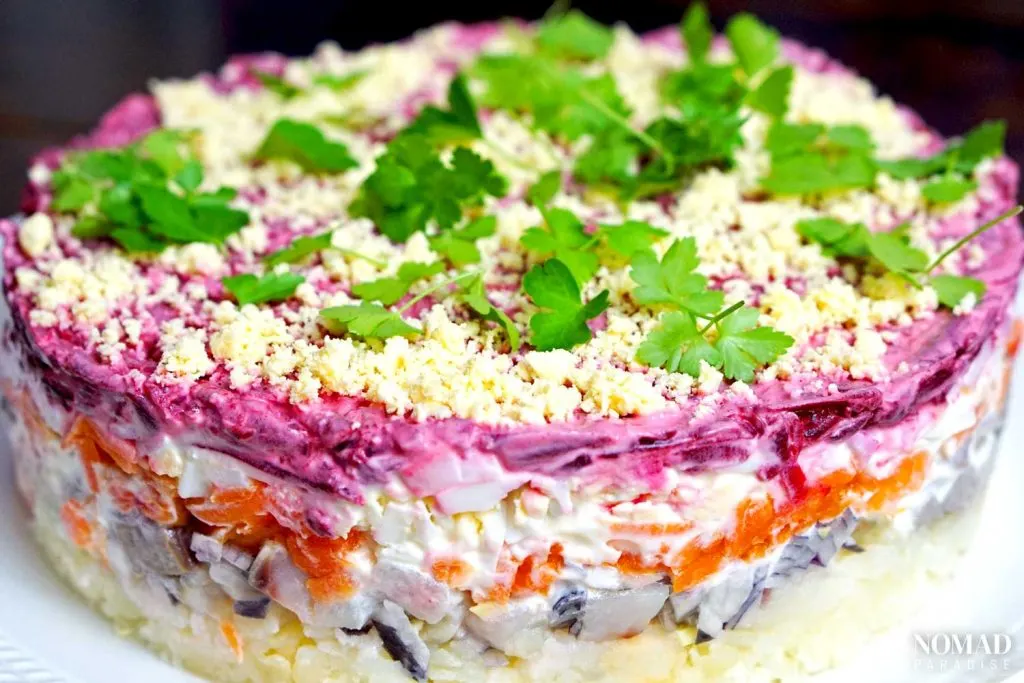
Seledka pod shuboi is one of Russia’s most loved and prepared appetizers. The term ‘pod shuboi’ translates to ‘under the fur coat,’ describing the way the herring is dressed in a number of vegetables.
First, succulent herring is cleaned, sliced into pieces, and placed at the bottom of a serving dish.
After that, all the vegetables are grated and placed on top of the fish, one-by-one, in thin layers.
Commonly used vegetables for individual layers include carrots, beetroots, boiled eggs, and potatoes.
The last layer (beetroot) is usually decorated with a few leaves of parsley. As Russian foods go, this is one of the most beautiful and delicious.
Seledka pod shuboi18 – Solenie Gribi (Солёные Грибы) – Salted Forest Mushrooms
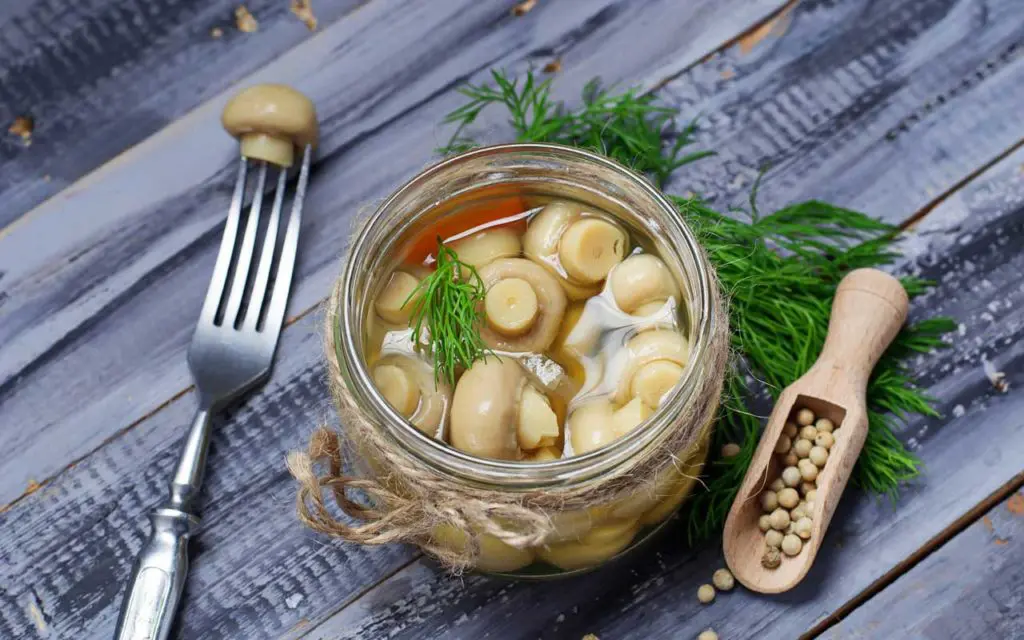
August in Russia is the best time to go mushroom-picking. Locals suggest that it is best to go early in the morning (dusk), to get to the mushrooms before crowds show up.
The best tasting mushrooms of the Russian forests are white mushrooms and lisichki (chanterelle) mushrooms.
Once collected, mushrooms are soaked in brine and seasoned heavily with salt. Herbs and other seasonings are also sometimes added.
These delicious and flavorful mushrooms can be enjoyed all year round. The store-bought solenie gribi often has a richer taste due to flavored brine being used.
19 – Pastila (Пастила) – Fruit Leather

Pastila is a very popular snack and dessert that has been made in Russia since the 16th century.
The name likely comes from the Latin “pastillus”, which literally means “scone”.
A wide variety of fruits can be used in pastila. It’s made by extracting both the juice and pulp from sour apples, berries, and other fruits.
Honey is then added to the juice and pulp mixture. Once the ingredients have been thoroughly mixed, the paste is then dried in a stove.
Once dried, the strips are cut into squares. This centuries-old technique is still used today to create this much-loved Russian food.
Pastila is a delicacy that can be found in stores as well as bought fresh from the producers. It tastes wonderful with a cup of hot herbal tea.
20 – Russian Vinaigrette (Русский Винегрет) – Vinaigrette Salad

Last but not least, Russian vinaigrette. This is a salad made from beetroots, potatoes, pickles, carrot, and herring.
The fresh vegetables are boiled until they soften, and then they’re diced.
The herring (preferably a fillet) has to be cleaned, cut into small pieces, and mixed with the vegetables.
The sauce is the most interesting part of this dish because it contains the strangest combination of ingredients that anyone could ever imagine!
For the sauce, you will need powder mustard, white wine, a bouillon cube, a yolk, sugar, and vinegar.
I must’ve gotten you to think: “Ouch, my stomach already hurts!” Well, to be honest with you, Russian food is delicious but it is not for everybody.
If you’re tempted to try something new, weird, and truly unique, you should definitely try Russian vinaigrette.
The best time of the year to do that, however, is definitely New Year’s Eve, since making Russian salad (olivier) and vinaigrette is a well-known tradition.
You will then be able to try it with everybody else and share your thoughts!
Vinaigrette SaladRussian Food Summary
It’s incredible to think that the wondrous tastes and aromas of Russian food are thanks to an incredible foundation laid down by rural Russian farmers and peasants.
Through the harsh winters, people’s resourcefulness allowed towns and villages to eat and survive, despite the odds.
Soups are one of the bedrocks of Russian food. There are so many eye-opening and flavorful combinations to enjoy, both hot and cold.
Rye and wheat, among other grains, also allowed the delicious bread, pies, and pastries to become an integral part of a Russian’s diet.
From there, we then start to see outside influence. From around the 16th century onwards, new and exotic foods began to arrive in Russia.
This paved the way for a new generation of fun and innovative cooking. Plenty of other ingredients, from Asia and Europe, were added to Russian cooking.
But at the core of it, the base ingredients on which Russians created their rural cuisine remained the same.
Today, the balance between traditional and experimentation has never been stronger.
This is why Russian food is so fascinating. While the base foods may be simple and hearty, they’re packed with a diverse range of ingredients.
So, one last time, before we go, here’s the full list of all the foods covered in this article.
Be sure to have this list of Russian food handy when you visit so that you can try one or more of these popular and traditional foods.
- Pelmeni (Пельмени) – Dumplings
- Shi (Щи) – Cabbage Soup
- Solyanka (Солянка) – Sausage Soup
- Blini (Блины) – Pancakes
- Vatrushka (Ватрушка) – Cream Cheese Bun
- Rasstegai (Расстегай) – Pie
- Kvass (Квас) – Fizzy Fermented Drink
- Medovukha (Медовуха) – Honey Drink
- Varenie (Варенье) – Jam
- Beef Stroganoff (Бефстроганов) – Beef with Sour Cream Sauce
- Holodets (Холодец) – Aspic
- Pirogi (Пироги) – Pies
- Kasha (Каша) – Porridge
- Okroshka (Окрошка) – Cold Summer Soup
- Buzhenina (Буженина) – Roasted Pork
- Prostokvasha (Простокваша) – Soured Milk
- Seledka pod Shuboi (Селёдка под Шубой) – Dressed Herring Salad
- Solenie Gribi (Солёные Грибы) – Salted Forest Mushrooms
- Pastila (Пастила) – Fruit Leather
- Russian Vinaigrette (Русский Винегрет) – Vinaigrette Salad
You Might Also Like to Read
- 23 Popular Ukrainian Foods to Try
- 15 Popular Bulgarian Foods to Try
- 15 Popular Lithuanian Foods to Try
- 14 Popular Moldovan Foods to Try
Save and Pin for Later
Want to keep all these delicious Russian food picks in a safe place? Save this article and pin it to one of your Pinterest boards for later.

Some Images licensed via Shutterstock
